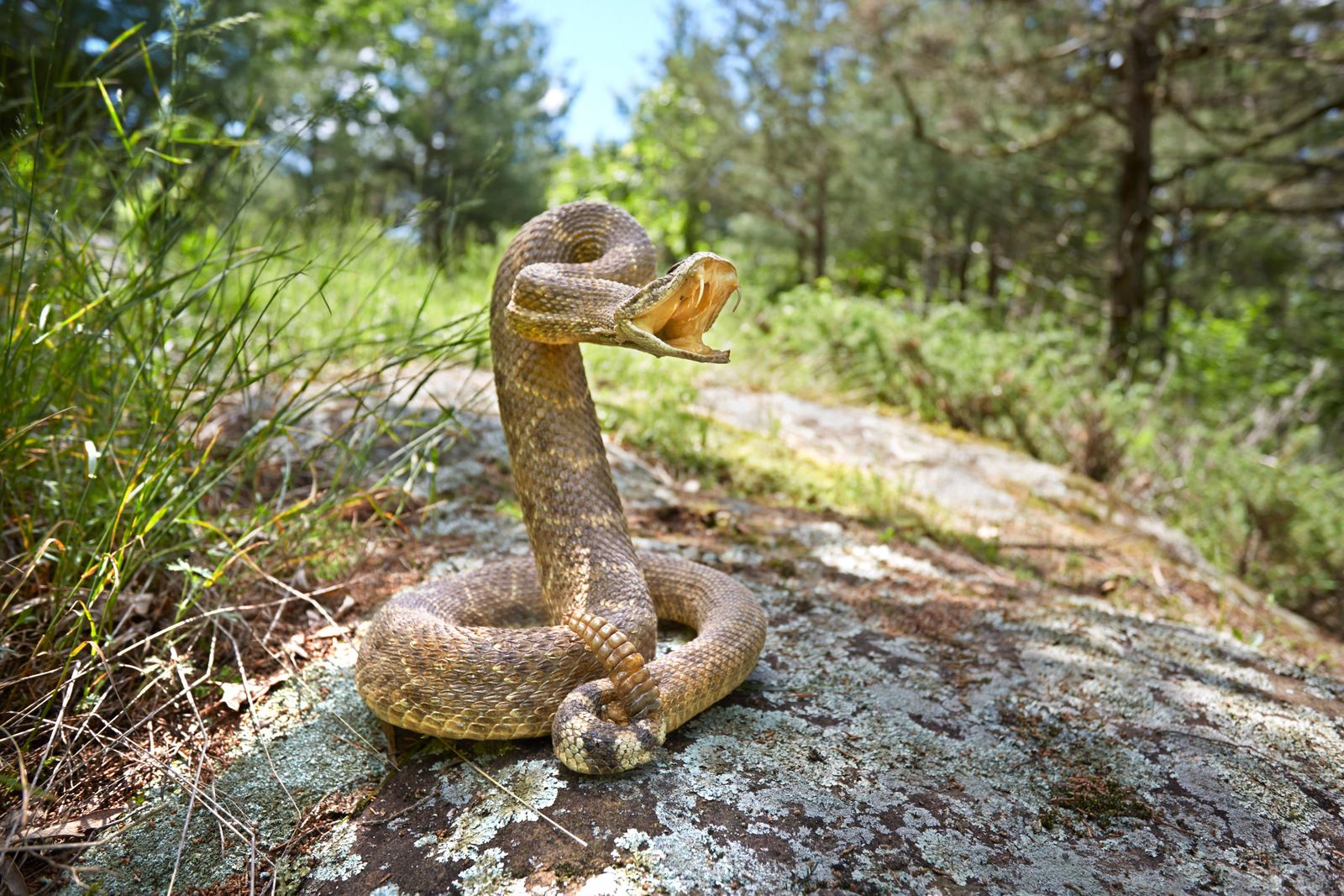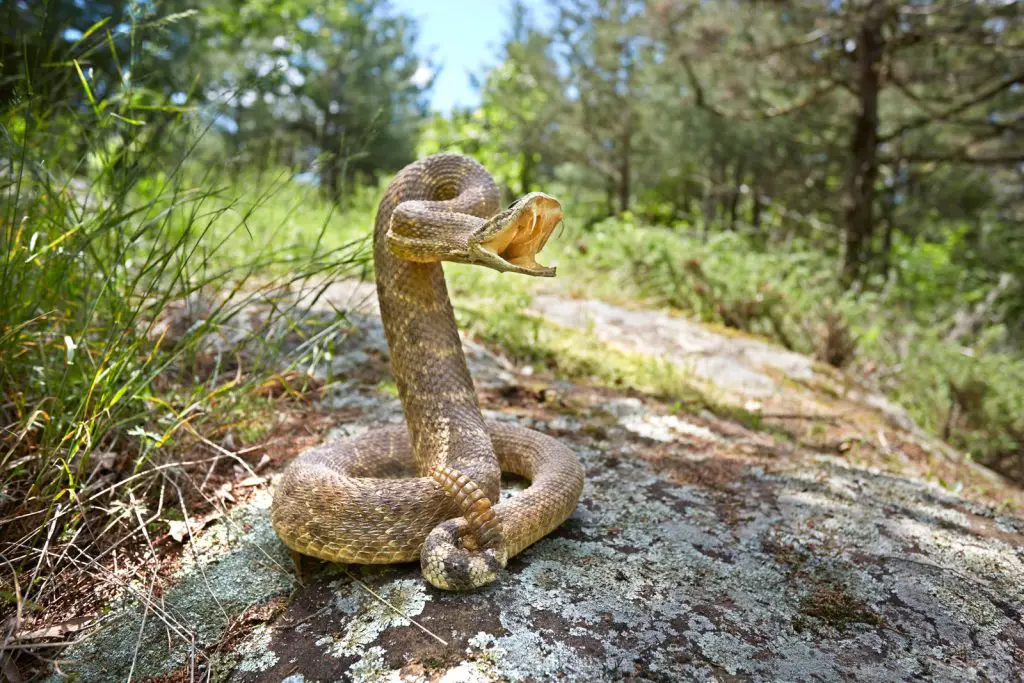Rattlesnakes are among the most venomous snakes in the world. Their reputation precedes them, making them both fascinating and terrifying to encounter. But just how dangerous are they? Are they a deadly threat to humans or simply misunderstood reptiles? In this article, we’ll explore the facts and myths surrounding rattlesnakes to help you better understand these slithering creatures. So, grab your hiking boots and let’s embark on a journey to discover the truth about rattlesnakes.
Rattlesnakes are highly dangerous and venomous reptiles found in North and South America. Their venom can cause serious injury or even death to humans and animals. It is essential to stay away from rattlesnakes and avoid provoking them. If you encounter a rattlesnake, it is best to slowly and calmly move away from it and seek medical attention immediately if you are bitten.

How Dangerous Are Rattlesnakes?
Rattlesnakes are venomous snakes that can be found in various parts of North and South America. They are known for their distinctive rattle on the end of their tails, which they use to warn potential predators or humans of their presence. While these snakes are fascinating to watch from a distance, they can be very dangerous if you come into contact with them. In this article, we will explore the dangers of rattlesnakes in detail.
1. Types of Rattlesnakes
Rattlesnakes come in many different species and subspecies, each with its own unique characteristics. Some of the most common types of rattlesnakes include the western diamondback, the eastern diamondback, the timber rattlesnake, and the Mojave rattlesnake. These snakes vary in size, color, and venom potency, but they all share the same dangerous potential.
If you encounter a rattlesnake, it’s important to identify the species so you can know what kind of venom you might be dealing with. Some rattlesnake bites can be more severe than others, and proper identification can help medical professionals provide the right treatment.
2. Venom Potency
Rattlesnake venom is a complex mixture of various proteins and enzymes that can cause a wide range of physical effects. The potency of the venom can vary depending on the species, the location of the bite, and the size of the snake. In general, rattlesnake venom can cause symptoms such as pain, swelling, and tissue damage.
In some cases, rattlesnake venom can also cause more severe symptoms, such as breathing difficulties, paralysis, and even death. This is why it’s important to seek medical attention immediately if you are bitten by a rattlesnake.
3. Bite Symptoms
If you are bitten by a rattlesnake, you may experience a range of symptoms depending on the severity of the bite. Initial symptoms may include pain, swelling, and redness around the bite area. You may also experience nausea, vomiting, and weakness.
As the venom spreads through your body, you may experience more severe symptoms such as difficulty breathing, low blood pressure, and even convulsions. In some cases, a rattlesnake bite can be fatal if not treated promptly.
4. Treatment Options
If you are bitten by a rattlesnake, it’s important to seek medical attention immediately. The first step in treating a rattlesnake bite is to immobilize the affected limb and keep it at or below heart level to slow the spread of the venom.
Medical professionals may also administer antivenom, which is a medication that can neutralize the venom and prevent further damage. Pain management medications may also be prescribed to help alleviate discomfort.
5. Prevention Tips
The best way to avoid a rattlesnake bite is to take preventative measures. When hiking or walking in areas where rattlesnakes are known to live, it’s important to wear long pants and closed-toe shoes. Avoid stepping over logs or rocks where snakes may be hiding, and be cautious when walking through tall grass or brush.
If you encounter a rattlesnake, give it plenty of space and do not attempt to handle or provoke it. Remember that rattlesnakes are not naturally aggressive and will only bite if they feel threatened.
6. Benefits of Rattlesnakes
While rattlesnakes can be dangerous to humans, they play an important role in their respective ecosystems. Rattlesnakes help control rodent populations, which can be a significant problem in some areas. They also serve as a food source for other animals, such as hawks and eagles.
Additionally, rattlesnake venom has been used in medical research to develop new treatments for various conditions, such as blood clots and high blood pressure.
7. Rattlesnakes vs. Other Snakes
Rattlesnakes are often compared to other snakes, such as copperheads and water moccasins. While all of these snakes are venomous, there are some key differences between them. Rattlesnakes are known for their distinctive rattle, while copperheads and water moccasins do not have this feature.
Rattlesnake venom is also generally more potent than the venom of copperheads and water moccasins. However, all three types of snakes can cause serious harm if you come into contact with them.
8. Rattlesnake Myths
There are many myths and misconceptions surrounding rattlesnakes that can lead to misunderstandings about these creatures. For example, some people believe that rattlesnakes are naturally aggressive and will attack humans unprovoked. In reality, rattlesnakes will only bite if they feel threatened.
Another common myth is that all rattlesnake bites are fatal. While rattlesnake bites can be very dangerous, they are not always fatal if proper medical treatment is sought immediately.
9. Rattlesnake Habitat
Rattlesnakes can be found in a variety of habitats, including deserts, forests, and grasslands. They are most commonly found in areas with rocky outcroppings or near bodies of water. In some areas, rattlesnakes are more active during certain times of the year, such as during the breeding season in the spring.
If you are planning to spend time in an area where rattlesnakes are known to live, it’s important to be aware of their habitat and take appropriate precautions.
10. Conclusion
While rattlesnakes can be dangerous to humans, they play an important role in their respective ecosystems. It’s important to take preventative measures to avoid a rattlesnake bite, such as wearing appropriate clothing and giving snakes plenty of space. If you are bitten by a rattlesnake, seek medical attention immediately to ensure the best possible outcome. By understanding the dangers of rattlesnakes and taking appropriate precautions, you can safely enjoy the outdoors while respecting these fascinating creatures.
Frequently Asked Questions
Rattlesnakes are known for their venomous bites, which can be dangerous to humans and animals alike. Here are some common questions and answers about the dangers of rattlesnakes:
What are the symptoms of a rattlesnake bite?
A rattlesnake bite can cause a variety of symptoms, including pain, swelling, and bruising around the bite area. Other symptoms may include nausea, vomiting, and difficulty breathing. In severe cases, a rattlesnake bite can lead to organ damage or even death. It’s important to seek medical attention immediately if you suspect you’ve been bitten by a rattlesnake.
In addition to the physical symptoms, a rattlesnake bite can also cause psychological distress. Many people who have been bitten by a rattlesnake report feeling anxious or fearful around snakes, even after they have fully recovered from the bite.
What factors affect the severity of a rattlesnake bite?
The severity of a rattlesnake bite can depend on several factors, including the size and species of the snake, the location of the bite, and the amount of venom injected. Generally, bites from larger snakes or those that inject more venom are more likely to be severe. Bites to sensitive areas of the body, such as the face or neck, can also be more dangerous.
Individual factors can also play a role in the severity of a rattlesnake bite. People who are allergic to snake venom or who have compromised immune systems may be more susceptible to serious complications from a bite. Age and overall health can also affect the body’s ability to recover from a rattlesnake bite.
How can you avoid a rattlesnake bite?
The best way to avoid a rattlesnake bite is to stay away from snakes and their habitats. Rattlesnakes are most commonly found in rocky, wooded areas, and they tend to be more active during the warmer months. If you are hiking or spending time outdoors in a known rattlesnake habitat, take precautions such as wearing long pants and boots and staying on designated trails.
If you do encounter a rattlesnake, give it plenty of space and do not attempt to handle or disturb it. Rattlesnakes will usually try to avoid humans if given the chance, so if you see a snake, back away slowly and give it room to retreat.
What should you do if you are bitten by a rattlesnake?
If you are bitten by a rattlesnake, seek medical attention immediately. Do not attempt to suck out the venom or use a tourniquet, as these methods can actually make the situation worse. Stay as calm and still as possible to slow the spread of venom through your body, and try to keep the affected limb below heart level.
In some cases, antivenom may be administered to counteract the effects of the venom. However, this treatment is most effective when given soon after the bite occurs, so it’s important to seek medical attention right away.
What is the mortality rate for rattlesnake bites?
The mortality rate for rattlesnake bites varies depending on several factors, including the size of the snake, the amount of venom injected, and the age and overall health of the victim. However, with prompt medical attention and appropriate treatment, the mortality rate for rattlesnake bites is relatively low, estimated to be less than 1%. This is one reason why it’s so important to seek medical attention immediately if you are bitten by a rattlesnake.
Even if you survive a rattlesnake bite, however, you may still experience long-term complications such as tissue damage or nerve damage. This is another reason why prevention and caution are key when it comes to avoiding rattlesnake bites.
The Most Venomous Rattlesnake in the World!
In conclusion, it is undeniable that rattlesnakes are dangerous creatures that should be treated with caution and respect. Their venom can cause significant harm to humans and animals alike, and their unpredictable nature means that encounters with them can be unpredictable. However, it is important to remember that rattlesnakes are also an important part of the ecosystem and play a vital role in controlling rodent populations. With the right precautions and knowledge, it is possible to coexist with these fascinating creatures while minimizing the risks they pose. So, whether you’re exploring the great outdoors or simply want to learn more about these fascinating creatures, take the time to educate yourself and stay safe.


